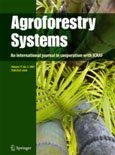Legume tree-based farming systems sit at a crucial nexus of agroecological sustainability. Their capacity to support microbial N2 fixation can increase soil nitrogen (N) availability and therefore improve soil fertility, crop yields, and support long-term stewardship of natural resources. However, increasing N availability oftentimes catalyzes the release of N into the surrounding environment, in particular nitrous oxide (N2O)-a potent greenhouse gas. We summarize current knowledge on the agroecological footprint of legume-based agroforestry and provide a first appraisal of whether the technology represents a pathway toward sustainable development or an environmental hazard.
Download:
DOI:
https://doi.org/10.1016/j.cosust.2013.09.001
Altmetric score:
Dimensions Citation Count:

























